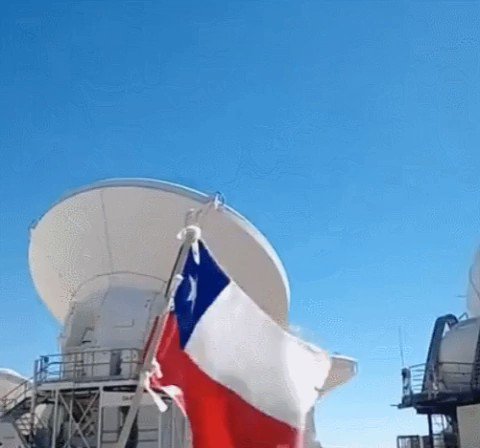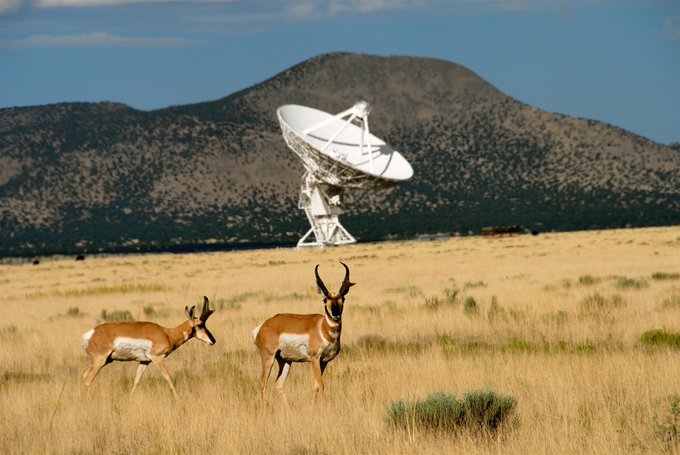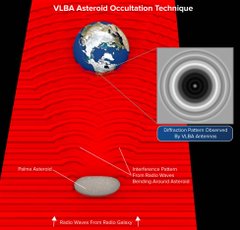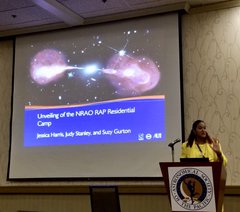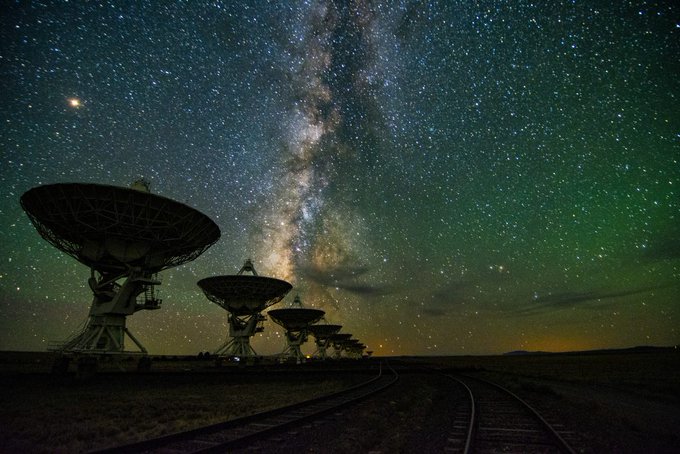-
NRAO Retweeted
Demonstration with itty bitty radio telescope by @TheNRAO EPO AD @StarGurton #ESTEAM #GirlsinSTEM
-
Spending the day at the #ESTEAM Summit in #Charlottesville!! The day-long summit is designed to engage students in hands-on #STEM activities staffed by a team of scientists and educators. http://www.esteamforyouth.org
-
NRAO Retweeted
What is our place in the universe?
Well, we have a literal answer for that -- thanks in part to @NSF's @TheNRAO #VLBA (with support from @USNavyResearch) the latest global effort to chart the skies . . .
From @Gizmodo http://bit.ly/2xG0uCn -
This is how #ALMA and the #VLA work together to study planet formation. ALMA imaged the outer portions of HL Tau's disk (left), and the Very Large Array detailed the inner portions of thick dust (right): .https://public.nrao.edu/news/hltau-vla/#PRimageSelected …
-
NRAO Retweeted
Happy #18septiembre for all Chileans, whose country has the perfect skies for astronomic observation. Image by @jcrojas819

-
Radio astronomy is represented at #dragoncon2018 by our intrepid PIO @astroblue1 and this is what happens: https://public.nrao.edu/nrao-meets-the-dragon-dragon-con-that-is/ …
-
Check out what one of our #NINE program participants, Jason Renwick, is doing @UWI_StAugustine on Friday, September 15th in Trinidad. #nextgenscientists
-
NRAO Retweeted
Astronomers watched the tiny radio shadow of asteroid Palma, sweeping across Earth at 32 miles per second, as it passed in front of a galaxy trillions of times as far away. That's some precision tracking! https://public.nrao.edu/news/vlba-measures-asteroids-characteristics/ …
-
Astronomers found a creative way to use the continent-wide Very Long Baseline Array to study an asteroid as it passed in front of a distant radio galaxy. This observation provides new information about the asteroid's size, shape, and orbit. #VLBA https://public.nrao.edu/news/vlba-measures-asteroids-characteristics/ …
-
Wrapping up our third day at #ASP2018, Jessica Harris discusses a pilot program she helped develop to give rising 9th graders an opportunity to learn more about physics and radio astronomy. For more info about our Radio Astronomy and Physics (RAP) camp: https://public.nrao.edu/outreach/
-
NRAO Retweeted
Scientists at #NSFfunded @TheNRAO have now measured the speed of superfast jets of material from a neutron star merger in August of 2017, and the results are...blinding. Learn more: http://bit.ly/2x9POf9
-
NRAO Retweeted
A next-generation camera for the South Pole Telescope at @NSF_OPP's Amundsen-Scott South Pole Station will make it more "like a time machine to go back to the first moments of our universe,” said John Carlstrom, of @UChicago. Read more from @Fermilab: http://tinyurl.com/mrg9g2w
-
We're happy to support the 130th Annual #ASP2018 Meeting, which promotes astronomy education and science literacy for all! The four-day conference will highlight a wide range of professional research and communication and discuss diversity in science fields. Image: NRAO/AUI/NSF
There are no more Tweets in this timeline.






